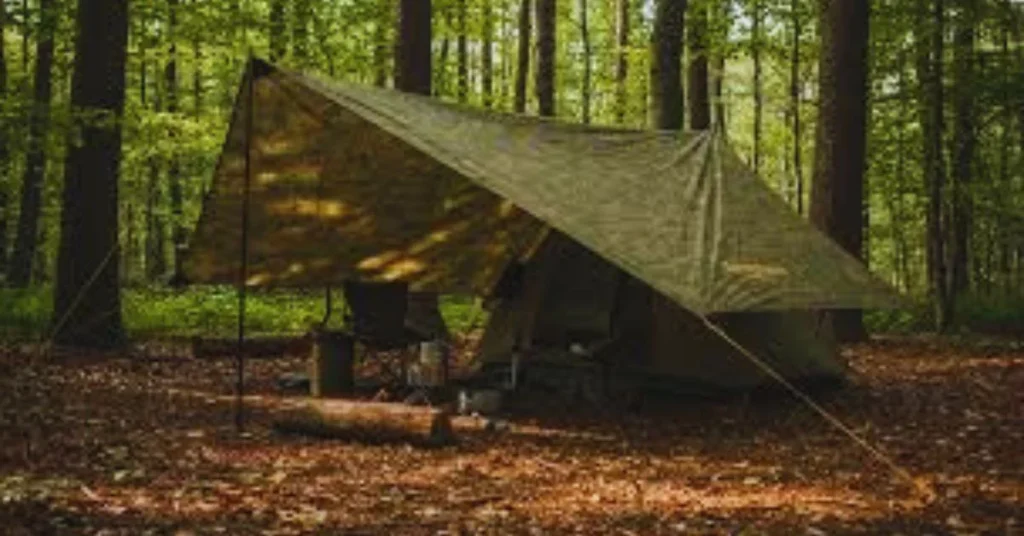Tarnplanen: The Ultimate Guide to Camouflage Tarpaulins
1. Introduction
Tarnplanen, often referred to as a camouflage or protective tarp, is a versatile material used for various outdoor and industrial purposes. Designed to protect against environmental elements like rain, wind, and sunlight, Tarnplanen is a reliable and durable covering solution. Whether used in construction, camping, transport, or military activities, Tarnplanen serves as a valuable tool for protection and concealment.
2. Definition and Meaning of Tarnplanen
The term “Camouflage tarp” comes from the German language, referring to camouflage tarpaulin. It is usually composed of heavy-duty, water-resistant materials intended for covering or shielding objects. Tarnplanen come in various colors and designs, and they frequently incorporate camouflage patterns that are easily mixed with natural environments—making them best suited for outdoor and military applications.
3. Historical Background
Tarpaulins date back to the early 20th century, when tarpaulins were employed by armies to camouflage vehicles and equipment in times of war. Later, the application of camouflage covers extended beyond warfare. Outdoor enthusiasts, transporters, and farmers also started using them for their day-to-day use, like covering equipment, tents, and goods. The development of synthetic materials further enhanced their usage and durability.
4. Tarnplanen in Contemporary Context
Today, Tarnplanen are no longer confined to military or industrial use. They are utilized in building sites to shelter materials, in farming to guard crops or hay, and in camping to build shelters. The contemporary versions are stronger, lighter in weight, and better UV-ray and water-resistant, thus compatible for long use in numerous habitats.
5. Design and Construction of Tarnplanen
Tarnplanen are made of durable materials like polyethylene, PVC, or canvas. Waterproof and UV-resistant coatings are applied to the surface as well. Metal eyelets and reinforced corners provide stable attachment, while the edges are heat-sealed to avoid tearing. These specifications render Camouflage tarp both durable and easy to manage in various weather conditions.
6. Categories of Tarnplanen
Several categories of Protective cover exist depending on their purpose and material quality:
PVC Tarnplanen: Heavy-duty and appropriate for industrial and truck covering.
Polyethylene Tarnplanen: Light and inexpensive for general purposes.
Camouflage Tarnplanen: Engineered specifically for outdoor and military use.
Fire-Resistant Tarnplanen: Produced using special coatings for safety-intensive surroundings.
Each of them addresses various requirements, providing versatility for consumers across industries.
7. Uses and Applications
Tarnplanen possesses numerous uses across various industries:
Construction: Covers material and shields under-construction buildings.
Agriculture: Protects crops, hay, and farm equipment from rain and sunlight.
Camping and Outdoor: Offers shelter, ground cover, or a privacy screen.
Transport: Used as a load cover for trucks or trailers.
Military: Covers vehicles, guns, and temporary shelters.
This broad versatility makes Protective cover an essential tool for both experts and outdoor users.
Also Read: MotoAssure Reviews: Is This Extended Warranty Service Worth It?
8. Benefits of Using Tarnplanen
The advantages of using Tarnplanen are:
Weather Resistance: Offers superior protection against rain, snow, and sun.
Durability: Made to endure wear and tear even in harsh conditions.
Versatility: Ideal for industrial, household, and outdoor applications.
Ease of Handling: Light to carry and to fold or ship.
Cost-Effective: Provides long-term use because of its durability and reusability.
9. Challenges and Limitations
Despite its numerous advantages, has some limitations. Over time, exposure to extreme weather may lead to wear and fading. Cheaper versions can tear easily if not properly secured. Additionally, certain plastic-based variants may not be environmentally friendly, requiring responsible disposal or recycling.
10. Buying Guide for Tarnplanen
When purchasing Tarnplanen, it’s essential to consider:
- Material Quality: PVC and polyethylene offer varying strength levels.
- Thickness and Weight: Select depending on application—industrial heavy-duty, camping light.
- Size and Dimensions: Check your space or gear prior to purchase.
- Weather Resistance: Inspect for UV and waterproofing.
- Eyelet Placement: Make sure spacing is equal for good fastening.
- Proper selection guarantees optimal efficiency and longevity.
11. Environmental Impact
The manufacturing and disposal of Tarnplanen have environmental consequences, particularly if they are produced from non-biodegradable plastics. Fortunately, most manufacturers now concentrate on environmentally friendly materials and recyclable alternatives. Reusable tarps and recycling processes can easily lower the carbon footprint of Waterproof tarp.
12. Care and Maintenance Tips
Maintenance prolongs the life of Tarnplanen.
- Regular cleaning with mild soap and water.
- Dry thoroughly before folding to avoid mold.
- Store in a dry, cool place out of the sunlight.
- Keep away from sharp objects that can cause tears.
- Check eyelets and seams regularly for wear.
Following these steps maintains your Waterproof tarp in great shape for years to come.
13. Popular Brands and Manufacturers
There are some popular brands of high-quality Tarnplanen manufacturers:
- Planenlager (Germany)
- TEX-OUT
- EuroTrail
- GeKaHo
- Proxistar
These brands are noted for their strong materials, great waterproofing, and easy-to-use designs perfect for a variety of applications.
14. Cost and Availability
The price of Tarnplanen is based on size, thickness, and material. Light tarps can range from $15–$30, while heavy-duty or PVC types can range from $100 or more. They are commonly found in hardware stores, outdoor supply stores, and internet sites such as Amazon and eBay.
15. Conclusion
Tarnplanen is still the most dependable and universal protective cover available today. From building and shipping to camping and military applications, it provides durability, weathering resistance, and value. As technology improves, environmentally friendly materials and better designs keep Tarnplanen a necessary fixture of contemporary outdoor and industrial lifestyles.



